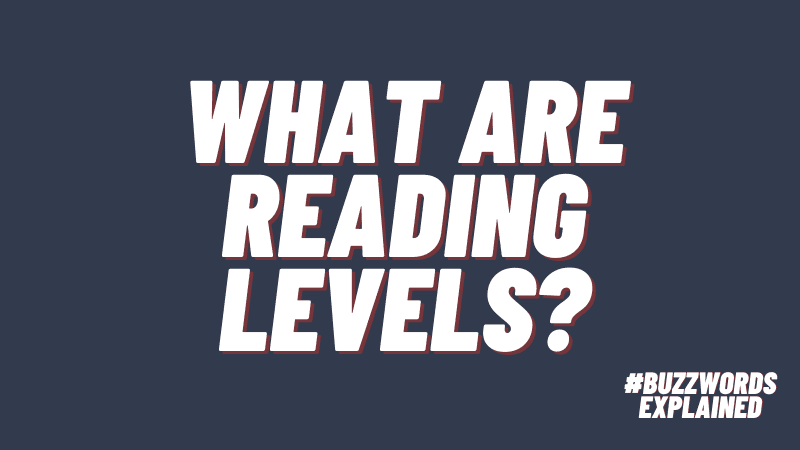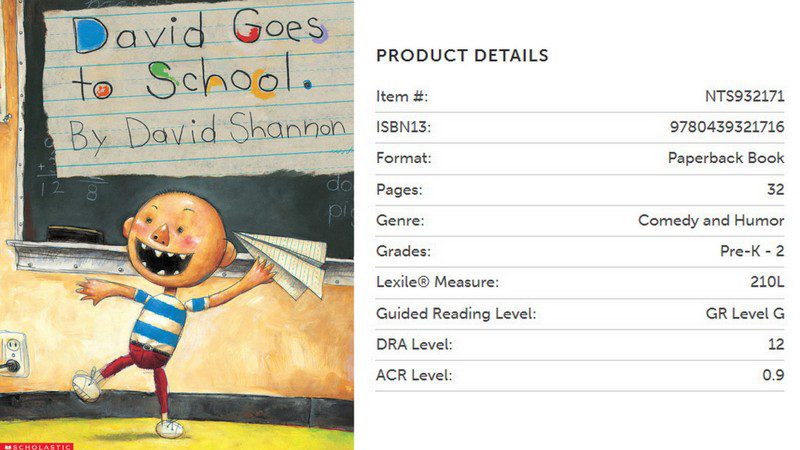

As a child starts school and begins learning to read, parents are likely to hear the term “reading level.” A teacher might share that a student is reading at, above, or below level. They may also provide specific numbers, like 440L or GR J. Parents can find all this confusing, so we’ve put together this simple guide for teachers to share as they discuss what reading levels mean for their students.

Reading levels are a way of determining the reading skills a student already has. They measure a child’s reading comprehension and fluency, using a variety of factors like phoneme awareness, decoding, vocabulary, and more. Teachers use reading levels to understand what a student knows and what they need to work on. They might also be used to assemble kids into small reading groups.
Many children’s book publishers indicate reading levels on their books, so parents and kids can quickly find options to suit their needs. Choosing the right reading level can be key for many children. If the book they try to read is too difficult for them, they may give up. On the other hand, reading books that are too easy won’t challenge them to build their skills.
It’s extremely important to remember a few things about these levels. First of all, in some cases, the score evaluates the ease of reading of a book, but not the content. For instance, a book like Alice Walker’s The Color Purple earns a 4.0 score on the AR/ATOS scale, indicating it’s written at a fourth grade level. However, most people would agree that the content of this book isn’t right for fourth graders. In fact, this type of book is what’s known as “high-low,” meaning the content and interest level is meant for higher-grade students, while the readability score is low enough that less-skilled readers will find it within their range. (Learn more about high-low books here.)
So while level numbers can be helpful, they aren’t the only indicator you should use when choosing a book. In fact, many teachers caution against using levels to limit kids’ reading choices. If a child is willing to tackle a more difficult book because the subject matter interests them, go ahead and let them! On the other hand, if they want to reread old favorites just for fun, that’s great too. The most important thing is to get students reading, whenever and however possible.

Schools give reading assessments one or more times each year. These assessments measure a student’s reading level based on one of several available systems. Each system has its own formula for determining a score, and your child might even be given a score in several different reading level systems.
Below are some of the most common systems you’ll find in schools, districts, and libraries. Every leveled book has a different score in each system, and you can find equivalency charts online to help you compare the various scores. Note that there are many systems out there, with different companies and publishers often designing their own. These basic four will cover most schools and students, though.
Lexile® is one of the most common reading level systems. These levels are indicated by a number followed by the capital letter L. They range from 10L for brand-new readers to 2000L and above for advanced readers. The first digit of the score roughly corresponds with grade level, so a book rated 370 would be appropriate for most third graders. When looking for “just right books” for Lexile levels, aim for those that are rated 100L below to 50L above your child’s current score.
ADVERTISEMENTExample Lexile measures include:
The GRL reading level system was developed by two Ohio State University professors, Irene Fountas and Gay Su Pinnell. You might hear it referred to by either of these names or by the abbreviation GRL. In recent years, this system has faced controversy as one of its core theories has been disproved by cognitive scientists. (Learn more about this dispute here.) Still, many schools and publishers continue to use the system, which grades books with letters from A (early readers) to Z+ (advanced). Choose books at the same letter level or one above to match kids with the best choices for their abilities.
Example GRL scores include:
The Accelerated Reader level is also called the ATOS score. This system analyzes the average sentence and word length, the vocabulary grade level, and the number of words in a book. Books are scored using an X.X format, where the first number indicates the grade level (0 = kindergarten), and the second indicates the approximate month of that level. For instance, a score of 5.4 would indicate the book should readable for a student in the fourth month of fifth grade.
Example AR scores include:
The Developmental Reading Assessment (DRA) tests various reading skills like phonemic awareness, phonics, and fluency. Student scores can range from A1 (for beginners) to 80 (advanced). Choose books at or slightly above a child’s DRA level to challenge them just enough, but not too much to frustrate them.
Example DRA scores include: